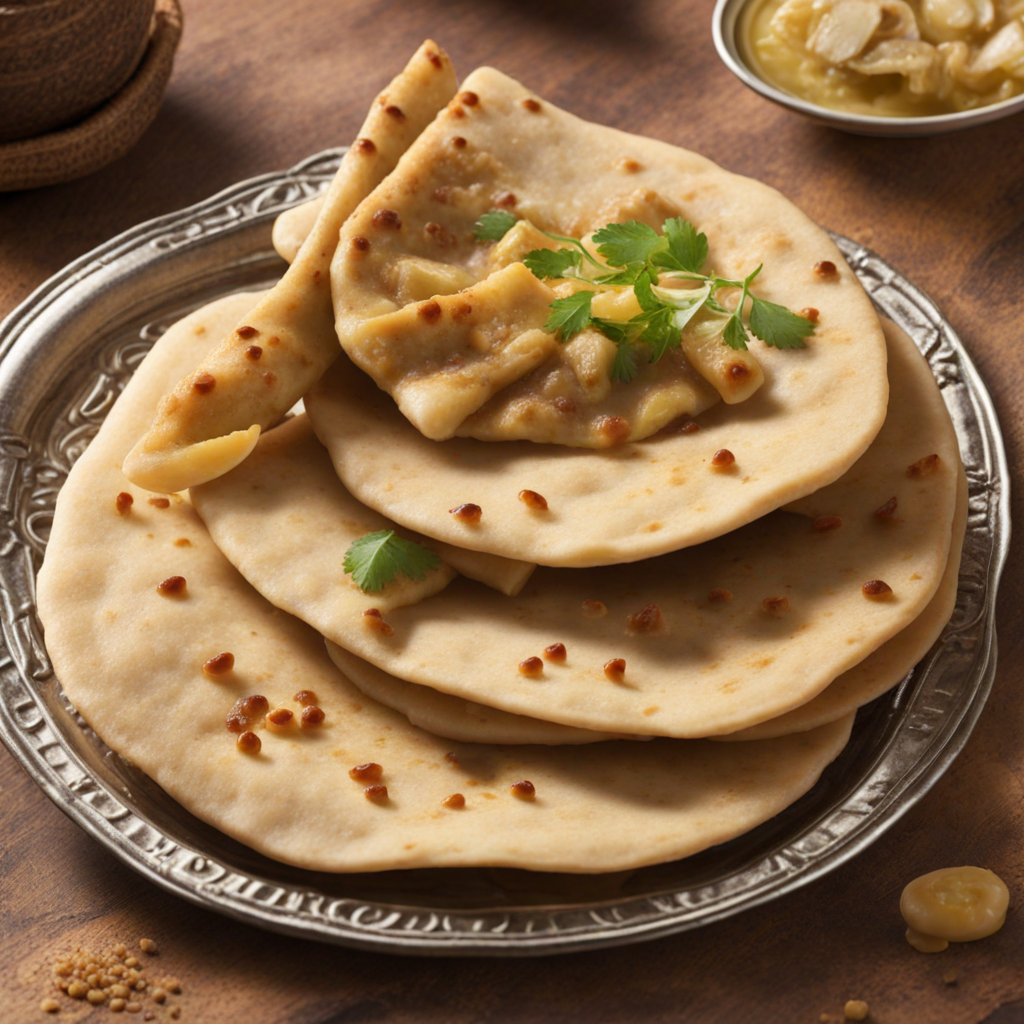Assidat al-Boubar
Assidat al-Boubar is a delightful Emirati dish that showcases the rich culinary heritage of the United Arab Emirates. This sweet and creamy porridge is primarily made from semolina, which gives it a unique texture that is both smooth and slightly grainy. The semolina is cooked slowly with milk and sugar, resulting in a comforting, velvety base that is both satisfying and indulgent. The dish is often flavored with aromatic spices like cardamom and saffron, which add depth and warmth to the overall flavor profile, making each bite a sensory delight. One of the standout features of Assidat al-Boubar is its topping, usually consisting of a generous drizzle of date syrup, which not only enhances the sweetness but also imparts a rich, caramel-like flavor that beautifully complements the creamy porridge. Nuts such as almonds or pistachios are often sprinkled on top, adding a delightful crunch and a nutty aroma that elevates the dish further. This combination of textures and flavors makes it a well-rounded dessert that is both pleasing to the palate and visually appealing. Traditionally served during special occasions and gatherings, Assidat al-Boubar embodies the spirit of hospitality in Emirati culture. It is often enjoyed warm, making it a perfect comfort food, especially during cooler months. Whether you're savoring it at a festive celebration or enjoying it as a cozy dessert at home, Assidat al-Boubar offers a unique taste of the UAE that invites you to experience the rich tapestry of flavors and traditions that define this beautiful country.
How It Became This Dish
A Culinary Journey Through عصيدة البوبر (Aseedat Al Boober) The United Arab Emirates (UAE), a land marked by its rich tapestry of history and culture, boasts a culinary heritage that reflects its diverse influences and traditions. Among the many dishes that represent the UAE's gastronomic identity, عصيدة البوبر (Aseedat Al Boober) stands out as a significant and cherished food that has transcended generations. This dish, a type of porridge made primarily from wheat or barley flour, is deeply rooted in the cultural fabric of the region, illustrating the intersection of daily sustenance and communal identity. Origins The origins of Aseedat Al Boober can be traced back to the pre-oil era when the Bedouin tribes roamed the deserts of the Arabian Peninsula. The harsh environment of the desert necessitated a diet that was both nourishing and easy to prepare, leading to the adoption of staple grains like barley and wheat. These grains were not only accessible but also provided essential nutrients, making them a cornerstone for survival in the arid climate. The term "عصيدة" (Aseedat) refers to a porridge-like dish, and "البوبر" (Al Boober) derives from the Arabic word for a specific type of grain. The preparation of Aseedat Al Boober reflects the simplicity and resourcefulness of traditional Bedouin cooking, where the grains were often mixed with water and cooked over an open fire until they reached a smooth, creamy consistency. This method of cooking was not only practical but also served as a communal activity, bringing families and communities together. Cultural Significance Aseedat Al Boober is more than just a dish; it is a cultural symbol that embodies the hospitality and generosity of Emirati traditions. It is often prepared during significant occasions, such as weddings, religious celebrations, and communal gatherings. The dish serves as a reminder of the importance of family and community bonds in Emirati society. The preparation and sharing of Aseedat Al Boober are laden with cultural rituals that highlight the values of sharing and generosity. Traditionally, the dish is served in large communal bowls, allowing everyone to partake in the meal. This practice fosters a sense of togetherness and reinforces the communal spirit that is central to Emirati culture. Moreover, Aseedat Al Boober has historical significance as it reflects the agricultural practices of the UAE. While the region is now known for its modern skyscrapers and urban development, its agricultural roots are fundamental to understanding the evolution of Emirati cuisine. The cultivation of grains like barley and wheat in the early days played a crucial role in shaping the dietary habits of the people. Development Over Time As the UAE underwent rapid modernization and economic transformation in the late 20th century, traditional foods like Aseedat Al Boober experienced both challenges and revitalization. The discovery of oil and the subsequent influx of wealth led to significant changes in lifestyle, including shifts in dietary patterns. Fast food and international cuisines began to dominate the culinary scene, posing a risk to the preservation of traditional dishes. However, in the face of globalization, there has been a renewed interest in Emirati heritage, particularly among younger generations. As Emiratis sought to reconnect with their roots, traditional dishes like Aseedat Al Boober have experienced a renaissance. Culinary initiatives, festivals, and cooking classes have emerged to promote traditional Emirati foods, ensuring that dishes like Aseedat Al Boober are not forgotten. The incorporation of modern cooking techniques and ingredients has also influenced the preparation of Aseedat Al Boober. While the basic recipe remains unchanged, contemporary chefs may experiment with flavors and textures, introducing elements such as date syrup, nuts, or spices to elevate the dish. This fusion of tradition and innovation appeals to both locals and expatriates, allowing Aseedat Al Boober to maintain its relevance in today's diverse culinary landscape. Aseedat Al Boober in Contemporary Culture Today, Aseedat Al Boober is celebrated not only as a nostalgic dish but also as a representation of Emirati identity. Many Emiratis take pride in sharing their culinary heritage with visitors, using dishes like Aseedat Al Boober as a means to tell the story of their culture. Food festivals, cultural events, and restaurants across the UAE now feature Aseedat Al Boober as part of their menus, showcasing its importance in the Emirati culinary narrative. In addition to its cultural significance, Aseedat Al Boober also carries nutritional value. Rich in carbohydrates and fiber, it serves as a wholesome meal that provides energy and sustenance. The dish is often enjoyed with side accompaniments, such as honey or ghee, further enhancing its flavor profile and nutritional benefits. Conclusion As we explore the history of عصيدة البوبر (Aseedat Al Boober), we uncover a rich tapestry of cultural significance, communal identity, and historical evolution. From its humble beginnings as a staple food for nomadic tribes to its place as a symbol of Emirati heritage, Aseedat Al Boober invites us to appreciate the enduring power of food as a medium of connection and storytelling. In a rapidly changing world, the revival of traditional dishes like Aseedat Al Boober reminds us of the importance of preserving culinary heritage. It serves as a bridge between generations, allowing the wisdom of the past to inform the present and inspire the future. Through Aseedat Al Boober, the spirit of the UAE’s rich history continues to thrive, nourishing not just the body but also the soul.
You may like
Discover local flavors from United Arab Emirates







